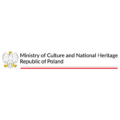BD = MC2 – English translations
Introduction – Sciences in comic strip pane
From June 21 to September 24, 2023, BDFIL will be taking over the squares and streets of Lausanne with an outdoor exhibition on the links between comics and science. Conceived as a journey through the city of Lausanne, it will appeal to young and old alike. With this summer exhibition, organized as part of its annual program, BDFIL invites us to reflect collectively on a major contemporary issue – the place of science in our society – and to see how comics can, in part, take up this issue and encourage questioning and dialogue.
Chapter 1 – Science, spirituality and temporality
At the origins of the universe and life
In Alpha: Directions, German author Jens Harder paints a vast fresco on the origins of the universe and life. The main plot presents the chronology of the universe’s development as it is understood by contemporary science. The often abstract and highly poetic illustrations are inspired by scientific representations. The author also inserts reproductions of other representations stemming from different cultures and civilisations. These intertwined images bear witness to religious, mythological or political interpretations that humans have conceived to apprehend the formation of their world. Jens Harder weaves together – without confronting them – the spiritual, temporal and scientific issues simply by juxtaposing images.
Archaeology and religion
In Tunnels, by Rutu Modan, science (in this instance archaeology) interferes with a religious project (exhuming the Ark of the Covenant, which promises the advent of the Jewish people), itself closely intertwined with a political issue (the Palestinian conflict). It doesn’t escape the readers that the cave in which the Ark of the Covenant lies is practically next to the secret bunker of a Palestinian combat leader. Here, the scientific project is disrupted or even led astray by the spiritual and temporal issues, since each character is driven by strong personal ambitions that move them away from the scientific method.
Science and religion put at the service of power
Hannibal, the main character in Stupor Mundi, is an Arab scholar invited to pursue his research work in Renaissance Italy alongside a rich protector. This mighty person wishes to establish his power by creating a fake Shroud of Turin thanks to Hannibal’s research on an archaic photography technique.
Here, both science and religion are exploited in the service of temporal power. In the same way, some centuries later, the Nazi regime put to the service of its political project both science (racial theories) and religion (the designation of Jews as the “deicide people”).
Scientific issues, religious issues
In The Mystery of the Great Pyramid, Edgar P. Jacobs depicts the tension between the issues at stake in archaeological research and the highly competitive issues of the treasure hunt that takes place between archaeologists. Little by little, spiritual and political issues emerge that are linked to the object of the research, an ancient cult that had not died out as the protagonists believed.
Chapter 2 – Lives in sciences
Scientists in boxes
Illustrated biographies of scientists are often about highlighting an extraordinary personality involved in a dramatic context. The plot questions the scientist’s ethics and his or her place in the march of History.
In this way, knowledge is relegated to the background of the biographical narrative, occupying the leftover space, an essential accessory for the story’s protagonist or setting.
A few very real men and women of science have become comic-strip characters without any link to a biographical approach. This was first the case of Isaac Newton under Gotlib’s pen, where the oft-repeated sequence of the apple has depicted the figure of the scholar in an infinity of variations. As for Leonardo da Vinci, he became the hero of a series that has enjoyed long-lasting success: Léonard.
Albert Einstein, the ultimate scientist
The iconic figure of the scholar, the ultimate scientist spanning many works, is, of course, Albert Einstein, who appears in many of the comic strips of the BD=MC2 exhibition.
His figure as a scientist has become emancipated from his research and discoveries (certainly too complex except for his magic formula E=MC2) and adds a range of colours in a great variety of stories. In Brain Drain, by Pierre-Henry Gomont, Albert Einstein even survives his own death and the theft of his brain! From famous scholar, he becomes a great eternal man.
Daniel Goossens goes even further in La Vie d’Einstein: he deprives Einstein of intelligence, putting him in the position of characters who have nothing in common with his presumed social position – bar fly, nouveau riche, misunderstood child, etc. – and plays on the discrepancy between these random stereotypes and Einstein’s immutable image.
Chapter 3 – In the mind of scientists
Heads filled with science
Scientific knowledge and work can be found in the brains of scientists, protected inside an often prominent and balding cranium. The white lab coat, glasses and beard (itself often white) also seem to indicate the presence of a scientific mind in an individual. With all these depictions of scholars, science does seem to be both a masculine and aged trait….
However, since the 2010s and the surge of science in French comic strips, roles of scientists have become less stereotypical and belong more often to feminine or younger characters.
Comic-strip scientists sometimes divert science in criminal or delusional projects. Moralising heroes then become the guardians of scientific ethics.
Precious brains
When the scientist loses his mind, science disappears! This is what happens to Professor Calculus in Destination Moon, to Getafix in Asterix and the Big Fight, to Zorglub in L’Ombre du Z… It’s also noteworthy that the opposite happens in Gotlib’s works: it’s the apple falling on Newton’s head that enables him to uncover the Law of Universal Gravitation!
The scientist’s brain, in which science is born, must therefore be protected and exploited: Léonard invents aspirin as his research gives him migraine and Champignac takes X2 to boost his mental faculties.
A very restless brain
Thanks to Pierre-Henry Gomont, we at last know what goes on in Einstein’s mind: in this fiction, the character of the famous scientist describes the stampede of his scientific thought process that carries him away like a runaway horse. More restrained graphically, Heisenberg’s thought process as illustrated by Baudoin is no less impressive thanks to it proliferation and irresistible progression.
Chapter 4 – The words of scientists
Nothing is simple with scientists
In classic comic strips, scientists’ speeches are often completely incomprehensible or ridiculously inappropriate to the situation of the characters or the needs of the story, what with neologisms, unending sentences full of tedious jargon and mathematical formulas acting as a meaningful setting.
In short, the language of science is inaccessible not only to readers, but also to the story’s protagonists. The story needs the magic of science, not its explanations, and all converges to assign scientists to a separate social world than that of the other characters in the story.
However, when scientific characters speak to us, the readers, the situation is reversed: in The History of the World in Comics, it is the researcher who clarifies, corrects and presents true knowledge.
All is clear with Professeur Moustache
Many didactic comic strips depict scientific figures addressing the readers. Inspired by Gotlib’s Professeur Burp, the Professeur Moustache created by Marion Montaigne is more serious in the knowledge that he shares and of which he demonstrates the origins, but also humorous in his way of making fun of his audience’s ignorance. By exposing the absurdity of certain beliefs regarding science, the drawings take part in the transmission of knowledge and of the scientific method.
All is reversed with Alessandro Pignocchi
Alessandro Pignocchi is an anthropologist and comic-strip author. In his Petit traité d’écologie sauvage, he depicts a Jivaro anthropologist who studies the ways of the inhabitants of Bois-le-Roi, that he imagines as one of the last places practising ancient capitalist customs. He thus operates a radical change of viewpoint and provides a fresh perspective on the world and the society in which we live, a position inherent to the scientific method.
Chapter 5 – Making scientific knowledge visible
Champignac’s inventions
In comic strips, scientific knowledge is made visible through its practical applications and the technical objects – devices, measuring instruments, tools, vehicles – used by the characters represent the power of science that enables to master natural forces. In this way, the authors show us that knowledge is a tool at the service of human beings: it can be constructed, manipulated, can perform a function; in short, it can be… useful.
Mycologist and inventor, Champignac softens steel, builds submarines… He is essential to the adventures of Spirou and Fantasio as is stated in this box of surprising self-referential lucidity.
Making invisible phenomena visible
Science aims to explain the unseen: forces and waves, radiations, currents and fluxes, energy and heat… How then can the comic strip, a purely visual art form, express these phenomena? By moving away from its usual language (what the readers see in the box is what the characters see) and integrating in its vocabulary new artifices born of the blend of scientific graphics with the graphical signs specific to comic strips.
At the heart of the infinitely small
To show the infinitely small, comic strips resorts to the miniaturisation of the characters. Thus, in Mister Cerveau, Jean-Yves Duhoo begins his story with a journey deep inside the human brain onboard a miniature vessel. Curiously, he doesn’t follow up on this idea, choosing instead to use other approaches such as analogies. He thus compares the circulation of information in the brain with his own meanderings in town during his visits to labs.
In Voyage au centre du microbiote, the reverse happens: the environment under study is enlarged and becomes the story’s setting. In Ouranos, there are no characters: the readers are immersed in the heart of a series of images that are apparently abstract, yet drive a fascinating story in the heart of matter.
Chapter 6 – Laboratories
Secret labs
Labs are shown as closed, even secret places, especially when nefarious scientific endeavours take place there. Research is then illustrated as solitary work led in a location cut off from the world. Is scientific work perhaps difficult to represent because it is not well known? It must certainly remain so for the needs of the scenario: the readers relate to the other protagonists of the story who aren’t scientists, and who fear or await the results of the experiments.
The secret lab can be accessed using a hidden elevator; and so, to understand science, is it necessary to raise ourselves or to delve into the depths?
Scientific phalansteries
Scientific research is a collective endeavour, even if it is sometimes restricted to areas closed to the public, such as the Los Alamos lab where the atomic bomb was created. In these research centres, scientists interact, help each other, collaborate, oppose each other, compete or stimulate each other. They build relationships that can be fraught with emotions… This is the subject matter of fictional stories in which Roger Leloup excels in his Yoko Tsuno series, as does Robin Cousin in Des milliards de miroirs.
A comic-strip artist in the labs
One does not enter a lab alone. Jean-Yves Duhoo learned that through experience, and after establishing his credentials, it was the charm of his drawings that opened the doors of the great fortresses of current research for him. That is when the comic-strip artist cum reporter entered the scene. Thanks to him, infernal machines became state-of-the-art telescopes and we can freely observe their workings in Chile; the alchemic powers of Champignac’s mushrooms are revealed thanks to illustrated interviews of researchers specialised in bioluminescence. Labs have no more secrets, they are out in the open, like the Lautaret Alpine botanical garden, or literally uncovered by the power of a perspective drawing than unveils the inner workings of IRCAM.
Chapter 7 – Science and life
The scientific accident
Many comic-strip superheroes are the products of scientific experiments, whether deliberate or accidental. In Watchmen, Dr Manhattan became all powerful after being accidentally involved in an unfortunate experiment; in Les petits formats, Fantasio’s behaviour is very disturbed after he was subjected to an experiment that went wrong.
Science, applied to humans, can have undesirable effects and an irreversible mistake give birth to monstrosity.
Transformation of human beings
In fictional stories, science is the modern cousin of the magic and sorcery that transformed princes into frogs, humans into werewolves and princesses into snakes. Comic-strip scenarios are therefore packed with scientific processes to transform human beings. Obviously, the characters aren’t always willing participants, which adds intensity to the adventure. And the comic-strip artists delight in the process, as it’s so much more stimulating to show the body’s metamorphoses than those of liquids contained in test tubes.
Human experimentation
What if human beings were the subjects of scientific research led by aliens? This fantasy as old as UFOs periodically reappears in comic strips. With Franquin as with Larcenet and Trondheim, we can see images of people rising in a light beam and being discharged into the vacuum.
However, Baudoin and Villani remind us that experimentation on human beings is a tragic human reality, without calling on fictional aliens.
Chapter 8 – Strange science!
Gaston Lagaffe, a wacky inventor
Taking leave of all scientific method, wacky inventors draw on their curiosity, inventiveness and all the tools of science to cobble together hairbrained machines. Christophe’s scholar Cosinus is their ancestor and Léonard, the character created by Turk and de Groot, belongs to the same family. However, the iconic figure of the handyman inventor has got to be Gaston Lagaffe, Franquin’s favourite character.
Lazy, sleepy, tired by nature, Gaston nevertheless unleashes overflowing energy when it comes to applying his intelligence, made of intuition and enthusiasm, to inventions that enable him to… tire himself less. His favourite disciplines: chemistry combined with cooking, smoking electronics and approximative mechanics.
Strange research topics
To make readers laugh with science, the most-often used humorous technique is to depict a scientific machine with all its stereotypes (from the equation to the lab coat), applied to a research topic that could not be more banal. As a precursor, Christophe highlighted the gap between the sophistication of the processes deployed by his scholar Cosinus and their inadequacy to resolve simple practical problems such as taking an omnibus. As for Daniel Goossens, he transforms babies into the subjects of lab tests in L’encyclopédie des bébés. Finally, more recently, Boulet invented zany scientific disciplines (partyology, etc.) displayed humorously in La rubrique scientifique.
The scientific machine goes awry
Despite his lab coat, Gotlib’s Professeur Burp has a hard time sticking to his stance as a scientist while being a comic-strip character. In the boxes, his cohabitation with the animals he studies turns out to be problematic: either the behaviour of the animal rubs off on him or he is faced with page layout problems that seem to demonstrate that science will not be restricted to boxes.
The scientific machine also goes awry in Les mésaventuriers de la science; however, comic strips have nothing to do with it this time: Jim Jourdane narrates comical yet true episodes in which scientific work goes wrong.
Chapter 9 – Adventures in the scientific world
Fictions of science
In these stories, it is science itself that is at the heart of the plot: a scientific project must succeed despite the obstacles in its way, be protected against attempts to take it over or be foiled if it is led by nefarious entities.
Scientific research is often treated according to narrative patterns that are foreign to it (a treasure hunt, a police investigation…). In this way, it can be somewhat perverted, but there is an advantage: to highlight the stimulation of scientific research and the adventure it can represent for the researchers themselves.
From object of study to subject of fiction: mummies
Coming back to life in museums where their sarcophaguses are exhibited and studied, mummies become very entertaining fictional characters: they superimpose the past on the present, lead to amusing anachronisms and blow a wind of fantasy in the peaceful – even dusty – world of museums and Egyptology.
Scientific expeditions
A scientific expedition presents wonderful assets for a work of fiction: a journey to a distant land, a gallery of archetypal characters (researchers in various fields, a guide, a security officer) and, of course, one mission, a common goal that unites them. Besides the traditional obstacles to be overcome (natural obstacles, unpleasant encounters, etc.), the scientific expedition stresses the issues at stake in scientific research in relation to other human issues such as the group’s cohesion and survival, peer rivalry, preserving the explored environment, etc.
The theatre of the scientific community
Without resorting to an expedition to faraway lands, a fiction can emerge within the scientific community of a research centre. In these more intimist and austere stories, scientific knowledge is often left out in favour of a deepening of the relationships of researchers to science and their interactions either with the scientific community or with the outside world (the general public, the media, religions, etc.).
Chapter 10 – Travelling through time and space
Time travel, a matter of science
Time travel is impossible, as it violates the second law of thermodynamics (certain physical phenomena are irreversible, particularly when there is heat exchange), but how could we possibly forego such a fantastic driving force of fiction?
Despite the theoretical impossibility, many adventures, such as those of Yoko Tsuno, depict time travel by adorning it with a scientific veneer.
The topic gets more complicated with Jack Kirby: a scholar travels in time to offer people of the past 20th-century technologies. Here, it is scientific knowledge that goes back in time!
In Valerian and Laureline’s first adventure, a scholar invents a time-travel machine that will be at the heart of the adventures of this couple of spatiotemporal agents.
Space travel, a matter of time
The special theory of relativity has left its mark in the imagination of scriptwriters and space travel becomes more complicated when combined with time travel. It can be made commonplace, as in the Valerian and Laureline series or considered an anomaly and drive the story.
Thus, Crépuscule depicts scientists who face the paradoxes of slowed-down time in a finite space by using the limited means of the comic strip: a fixed image enclosed in the finite space of the box…
Terre rare has recourse to aesthetics borrowed from space travel as much as from artistic representations of scientific data. The journey is graphical, the experience scientific.
The space-time of the comic strip
Reading a comic strip is also a singular temporal experience, a subtle travel through the time of the story and the space of the page.
Kevin Huizenga explores his own relationship to time and memories. His storyboards poetically mingle an iconography borrowed from scientific diagrams and devices specific to comic strips: boxes, speech bubbles, etc.
In a more fun approach, Etienne Lécroart jostles together different temporalities: in Cercle vicieux, a comic strip drawn as a palindrome, the readers believe they are going back through the time of the story that suddenly reverses; in Le cycle, while moving forwards in the story, the readers go back through the time of its creation, from the storyboard to its synopsis.









